Q
Which model of Toyota Corolla has the lowest fuel consumption?
Among the provided Toyota Corolla models, detailed fuel consumption comparison data for each model is not mentioned. Generally speaking, a vehicle's fuel consumption is affected by various factors such as driving habits, road conditions, climate, and load. Usually, hybrid models may have an advantage in fuel consumption. For example, hybrid models like the Frontlander Hybrid have an official combined fuel consumption of about 4.1 - 4.5L/100km and a fuel consumption of about 3.8 - 4.2L/100km in urban driving. As for traditional fuel - powered vehicles, a 1.2T model has an average fuel consumption of about 6.8L/100km in combined conditions, a 1.6L model consumes about 7.1L per 100km in mixed conditions, and a 1.8L model consumes about 7.71L per 100km under specific test conditions. If you want to know the best fuel - consumption performance of a specific Toyota Corolla model, it is recommended to refer to the vehicle manual or consult your local Toyota 4S dealership.
Special Disclaimer: This content is published by users and does not represent the views or position of PCauto.
Related Q&A
Q
What is the most sold car in the world in 2024?
As of 2024, the world's best-selling car model remains the Toyota Corolla. This classic family car continues to win over global consumers with its reliability, fuel efficiency, and great value for money. It's especially popular in Southeast Asian markets like Malaysia, where its durability and low maintenance costs make it a perfect fit for local road conditions and driving habits. Broadening the view a bit, the Corolla's success also reflects trends in the global auto market – consumers are increasingly leaning toward practical, fuel-efficient vehicles that are easy to repair. Toyota's hybrid variants, like the Corolla Hybrid, have further boosted its eco-friendly image, aligning with the current push for energy conservation and emissions reduction. For Malaysian buyers, the locally assembled (CKD) Corolla offers a more competitive price point, and Toyota's extensive after-sales service network in the country is another reason it's a top pick for many families. While rivals in the same segment, such as the Honda Civic and Nissan Sylphy, perform well too, the Corolla maintains its lead thanks to its well-rounded overall strength.
Q
Are there any problems with the 2019 Toyota Corolla?
The 2019 Toyota Corolla has proven to be a solid performer in Malaysia. While a small number of owners have noted a slight jerkiness from the CVT transmission at low speeds, and some trims could use better sound insulation at highway speeds, these are far from common issues and don't really hinder daily driving. What truly stands out is its 1.8L Dual VVT-i engine paired with the TNGA chassis – the fuel efficiency is impressive, and the handling feels stable, especially handy for Malaysia's twisty roads. The standard Toyota Safety Sense suite, which includes pre-collision warning and lane keep assist, is a rare and welcome safety bonus in this segment.
Drivers here have also praised the Corolla's air conditioning system for keeping things cool even in Southeast Asia's sweltering heat. Plus, the locally-assembled models come with extra rust protection, which is smart given the tropical climate. If you're looking at a used one, keep an eye on the battery condition and make sure the transmission fluid has been changed regularly – the heat and humidity here can take a toll on rubber components over time.
Compared to other Japanese models in its class, the Corolla offers noticeably lower maintenance costs. Toyota's 5-year warranty is another big plus for long-term peace of mind, and let's not forget – its durability is already well-proven by how many you see in taxi fleets around Malaysia.
Q
What is the most popular car color for 2025?
Based on global automotive color trend reports and analysis of Malaysia's market preferences, the most popular car colors for 2025 are projected to be **natural tones**, with a particular emphasis on **earth shades** (think sand, taupe) and **muted greens**. These hues not only align with eco-conscious values but also complement Malaysia's lush tropical landscapes beautifully.
Neutrals like white and gray remain steadfast favorites among Malaysian buyers, but there's a growing shift toward unique, dirt-resistant matte and metallic finishes. Younger drivers, in particular, are gravitating toward soft yet distinctive tones such as haze blue or light khaki.
What's more, as electric vehicles gain traction, tech-forward shades like silver-gray and pearl white are holding strong – they really make a car's lines pop and enhance that modern, cutting-edge vibe.
A key consideration? Malaysia's hot, rainy climate makes heat-resistant, easy-to-keep-clean colors way more practical. It’s no surprise automakers are pushing these options hard.
If you’re in the market for a new ride, factor in the local weather and long-term appeal. And don’t forget, many brands now offer custom color services – the perfect way to blend personal style with everyday functionality.
Q
What kind of engine is in the 2025 Toyota Corolla?
The 2025 Toyota Corolla is expected to continue offering both petrol and hybrid powertrain options in the Malaysian market. The petrol variants will most likely be equipped with the 1.8L or 2.0L Dynamic Force naturally aspirated engines, paired with the Direct Shift-CVT gearbox. The 2.0L version, in particular, should deliver around 169 horsepower, striking a good balance between smooth driving and fuel efficiency. On the hybrid side, the fifth-generation THS II system will be featured, combining a 1.8L Atkinson-cycle engine with an electric motor for a combined output of approximately 138 horsepower. A key upgrade here is the shift to a higher energy density lithium-ion battery, which should translate to better electric-only range and snappier low-speed response.
It's worth highlighting that Toyota has been placing significant emphasis on tropical-adapted engine tuning for Southeast Asian markets in recent years. This includes optimizing cooling systems specifically for hot and humid conditions, a detail that will resonate well with Malaysian drivers. For those craving more performance, the hot-blooded GR Corolla is always a topic of interest, though the chances of it making its way to Malaysian shores remain slim.
Regardless of the variant, the Corolla's engine technology continues to prioritize durability and low maintenance costs – traits that align perfectly with Malaysia's diverse road conditions and typical driving habits. Whether it's daily commuting or longer highway stints, this car is more than up to the task.
Q
Does the 2025 Corolla have AWD?
The 2025 Toyota Corolla does offer all - wheel drive (AWD) on select trims, especially in the North American market. Typically, the AWD system is paired with gasoline - powered variants, whereas hybrid models may not offer this option.
In Malaysia, the AWD system can definitely provide better traction and stability, whether you're dealing with slippery roads during the rainy season or tackling some light off - road trails. But don't just rely on this information - always check Toyota Malaysia's official announcements for the exact specs. Your best option is to visit their website or go to a dealership to confirm what's available locally.
So, how does the AWD system work? It dynamically shuffles torque between the front and rear wheels to sharpen handling, but there's a trade - off: you'll see a slight increase in fuel consumption and a higher purchase cost. So, it really comes down to balancing your needs with your budget.
If your daily driving is mostly city commuting, a front - wheel drive Corolla should serve you just fine. But if you regularly drive through rainy areas or rough terrain, opting for the AWD version might be worth it.
And let's not forget the competition – rivals like the Honda Civic or Mazda3 also offer similar drivetrain choices in some markets. But each brand puts its own spin on the tech and tuning, so they'll feel different from the Corolla out on the road.
Q
How much is the invoice price for a 2025 Toyota Corolla?
When it comes to the invoice price of the 2025 Toyota Corolla, the official pricing for the Malaysian market hasn't been officially announced yet. Typically, new car prices are released by UMW Toyota Motor (Toyota's Malaysian distributor) closer to the launch date, so it's best to keep an eye on their official website or check with authorized dealers for the latest updates. For reference, the 2024 Corolla ranges from around RM130,000 to RM150,000 in Malaysia, depending on the trim level. The 2025 model might see slight adjustments due to upgraded features or currency fluctuations. When buying a car in Malaysia, beyond the invoice price, you'll need to factor in additional costs like registration fees, insurance, and road tax—these usually add up to about 5% to 10% of the total vehicle price. What's more, the Toyota Corolla has long been a favorite among Malaysian buyers for its reliability and low maintenance costs. If available, the hybrid version could further cut down on fuel expenses. Before making a decision, it’s wise to compare configurations and long-term running costs across different variants. Also, don’t hesitate to ask dealers about any ongoing promotions or financing packages to get the most out of your budget.
Q
Where is the 2025 Toyota Corolla made?
The production setup for the 2025 Toyota Corolla remains pretty similar to the current model. It's mainly rolling off the lines at Toyota plants in Japan, the US, and select Asian countries like Thailand. For the Malaysian market, some Corolla units will likely be imported from Thailand – makes sense, right? Thailand's a major Toyota hub in Southeast Asia, and being close to Malaysia helps keep shipping costs down and gets cars delivered quicker.
As one of the world's best-selling cars, the Corolla has a production network spread across multiple countries to keep supply steady and cater to regional demands. Malaysian buyers can rest easy because no matter where it's built, Toyota sticks to those strict global quality standards.
On top of that, the Corolla's always been known for being reliable, fuel-efficient, and comfortable to drive – perfect for Malaysia's roads and climate. If you're looking to buy one locally, check out Toyota Malaysia's official website or swing by an authorized dealer for the latest specs and after-sales info.
Q
What is the fuel economy of the Toyota 2025?
Toyota hasn't spilled the beans on exact fuel economy figures for its 2025 models just yet, but we can get a pretty good idea by looking at how their recent rides have been sipping fuel. Take the Corolla Cross with the Dynamic Force engine, for example – in real-world tests here in Malaysia, the hybrid version clocks in around 5.7L/100km. And the new Camry Hybrid? That one's even thriftier, pulling off about 4.1L/100km.
Looking ahead to 2025, Toyota's likely to tweak their powertrains even more. We might see the next-gen THS IV hybrid tech or even plug-in hybrid options, which could boost fuel efficiency by 5-10%. For us Malaysian buyers, going hybrid isn't just about dodging the ups and downs of RON95 prices – there's also those sweet tax breaks for Energy Efficient Vehicles (EEVs) to consider.
Of course, it's worth remembering that real-world fuel consumption can vary a lot depending on how you drive, the roads you're on – think KL's stop-start traffic – and how much you blast the air-con. So, if you're in the market, it's always a good idea to take a test drive and get a feel for the actual fuel usage yourself. On a practical note, Toyota's already localizing production for some models here, like the Corolla Cross, which should help keep maintenance costs more wallet-friendly down the line.
Q
What is the cheapest new car in 2025?
Looking to score the cheapest new ride in Malaysia come 2025? The Perodua Axia is still expected to hold that title. It’s been a mainstay in the entry-level market for ages, and for good reason – it’s easy on the wallet and comes with all the practical stuff you need, perfect if you’re shopping on a tight budget. That 1.0L engine? It’s a solid all-rounder, balancing fuel sipping with the demands of daily commuting. Even the base model doesn’t skimp on the essentials, packing ABS and airbags, while the higher trims might treat you to extras like a touchscreen and reverse camera.
If you’re open to other options, the Proton Saga is another big name in the value-for-money game. It might cost a smidge more than the Axia, but you get a roomier interior, which makes it a better pick for families.
Let’s be real, the small car scene in Malaysia is pretty cutthroat. When you’re picking your next set of wheels, you’ve got to weigh up a bunch of things: price, how thirsty the engine is, warranty deals, and even how well it’ll hold its value as a used car. Local brands like Perodua and Proton usually have the edge when it comes to cheaper maintenance and a more accessible after-sales network. On the flip side, some imported brands like Toyota or Hyundai might throw out some tempting deals on their entry-level models during promotions. Just keep in mind, things like import taxes and the cost of spare parts could hike up your long-term ownership costs.
My two cents? Before you sign on the dotted line, check out what each brand is offering in terms of promos. And don’t forget to think about how you’ll actually use the car – is it mostly for zipping around the city, or do you need something for longer road trips? Figure that out, and you’ll be in a great spot to make the best choice.
Q
How much will the 2025 Corolla cost?
The 2025 Toyota Corolla GR Sport is priced at RM 149,800. This C-segment sedan is powered by a 1.8-liter petrol engine, churning out 139 horsepower and 172 Nm of peak torque, paired with a 10-speed CVT gearbox. It drives the front wheels, with a MacPherson strut independent suspension up front and a double-wishbone independent setup at the rear. Safety kit includes 7 airbags, ABS, and vehicle stability control. On the convenience front, you get keyless entry, automatic climate control, and a 10-inch capacitive touchscreen. This pricing aims to hit the sweet spot for buyers in this segment looking for a solid mix of performance, comfort, and safety.
Popular Cars
Model Year
Car Compare
Car Photo
Latest Q&A
Q
Does the 2019 Golf GTI have a timing belt or chain?
The 2019 Golf GTI uses a timing chain instead of a timing belt—a design that offers better durability and lower maintenance costs. Typically, a chain lasts as long as the engine itself and rarely needs replacement, whereas a belt requires inspection or replacement every 60,000 to 100,000 km. If neglected, a worn belt can snap and cause severe engine damage.
VW’s EA888 engine family has long relied on chain-driven systems, which are relatively quiet and highly reliable. That said, it’s crucial to periodically check the tensioner’s condition. Some earlier models experienced timing issues due to tensioner design flaws, but this was addressed in the 2019 version.
For performance enthusiasts, a chain system handles high-revving stress better, making it a common choice for hot hatches like the GTI. For daily driving, just stick to VW 50400/50700-spec oil as recommended in the manual—proper lubrication keeps the chain system healthy long-term.
One heads-up: If you hear noticeable metallic rattling near the front of the engine, have the guides or tensioner inspected ASAP. Unlike the telltale belt squeal before failure, this noise is a classic sign of chain-related wear.
Q
What is the recall on the 2019 GTI?
The 2019 Volkswagen Golf GTI was subject to a safety recall addressing two potential issues. First, the fuel pump control unit software could malfunction, potentially causing engine stalling in rare cases. Second, some vehicles might have rear suspension stabilizer link bolts that weren't tightened to specification, posing a loosening risk. Owners can visit authorized dealers for free software updates or bolt retightening.
These proactive recalls demonstrate Volkswagen's commitment to safety. Dealers often handle outstanding recall items during routine maintenance.
For performance-oriented models like the GTI, it's wise to go beyond recall checks. Pay close attention to the turbo system, DSG transmission fluid, and brake wear—these components endure more stress during spirited driving. If warning lights appear or you notice unusual noises, get a professional inspection promptly. Keeping the car in top shape ensures you can fully enjoy its dynamic capabilities.
Q
Does the 2019 GTI require premium gas?
The 2019 GTI does recommend using high-octane fuel (typically RON 95 or above). Its 2.0L turbocharged engine has a relatively high compression ratio, and premium gas ensures optimal performance while reducing knock risk. It also helps maintain engine cleanliness and long-term reliability.
While the car may tolerate lower-octane fuel (like RON 92), you’d see slightly reduced power output and fuel efficiency. Over time, it could also affect engine longevity. Turbocharged engines are particularly sensitive to octane ratings since turbos generate higher heat and pressure—high-octane fuel handles these conditions better.
Mixing different fuel grades occasionally won’t hurt, but sticking to the manufacturer’s recommendation is ideal. Also, periodic fuel additive treatments can help clean carbon buildup, especially for direct-injection engines.
One more thing: even with the same octane rating, fuel additive packages vary by brand. So, picking a reputable gas station matters too.
Q
How long will a 2019 GTI last?
The lifespan of a 2019 GTI largely depends on maintenance and driving habits. With regular oil changes, transmission fluid replacements, and avoiding aggressive driving, it can easily clock over 200,000 kilometers—or even more. Its 2.0T engine and DSG gearbox are proven combos, and as long as you stick to the factory service schedule, mechanical reliability won’t be an issue.
Just keep in mind: turbocharged engines demand extra care. Always use the right spec full-synthetic oil and monitor the cooling system. Climate plays a role too—hot, humid conditions mean paying extra attention to rubber seals and electronics. Every 50,000 km, have the timing chain and high-pressure fuel pump inspected (key items for turbos).
Driving style matters. Don’t redline it constantly, and let the engine warm up properly after cold starts. Rustproofing helps long-term durability, so regular underbody washes are smart. Nail these details, and this car’s built to last.
Q
How fast is the 2019 GTI?
The 2019 GTI truly delivers when it comes to performance. Under the hood lies a punchy 2.0-liter turbocharged four-cylinder, churning out 228 horsepower and 350 Nm of torque. Whether you opt for the engaging 6-speed manual or the lightning-fast 7-speed DSG, this hot hatch rockets from 0-100 km/h in just 6.3 seconds, with an electronically limited top speed of 250 km/h.
What really sets the GTI apart is its razor-sharp handling. The sport-tuned suspension and electronic differential lock work together to deliver precise steering and rock-solid cornering stability. It’s the perfect blend of everyday practicality and proper driver’s car thrills—a well-rounded hot hatch in every sense.
For enthusiasts, the GTI’s tuning potential is massive. Many owners go for ECU remaps or intake/exhaust upgrades to squeeze out even more power. Just remember to keep things street-legal—safety and compliance should always come first. Around here, these pocket rockets have a solid following, and it’s easy to see why.
View MoreRelated News

Toyota unveils the new Corolla at the Auto Guangzhou in China. What changes will the future Corolla have?
AshleyNov 25, 2025

Toyota Corolla facelift model unveiled, the new front design looks like Camry
JamesSep 11, 2025

2026 Toyota Corolla Hybrid launched in North America, offering all-wheel drive option
Kevin WongJul 29, 2025
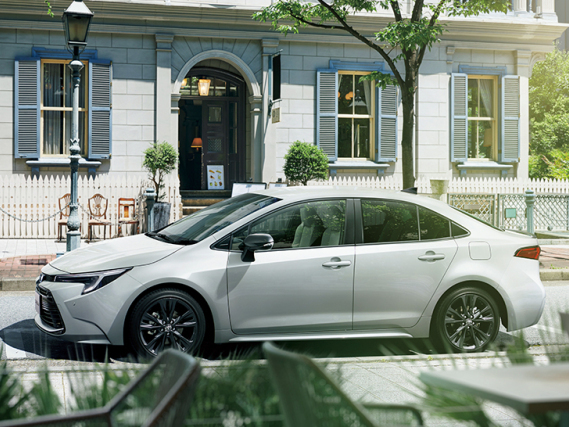
Toyota has Launched a Revamped Version of Corolla in Japan, No Longer Sell Gasoline-Powered Corolla
Kevin WongMay 12, 2025
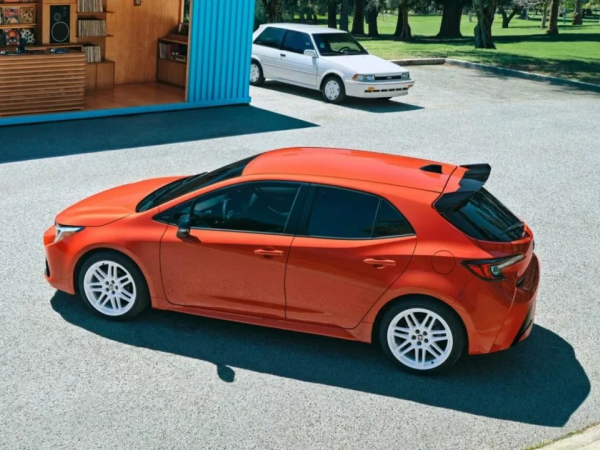
Toyota Plans to Launch 2026 Corolla Hatchback FX: A Nod to the 1987 FX16
WilliamMay 9, 2025
View More







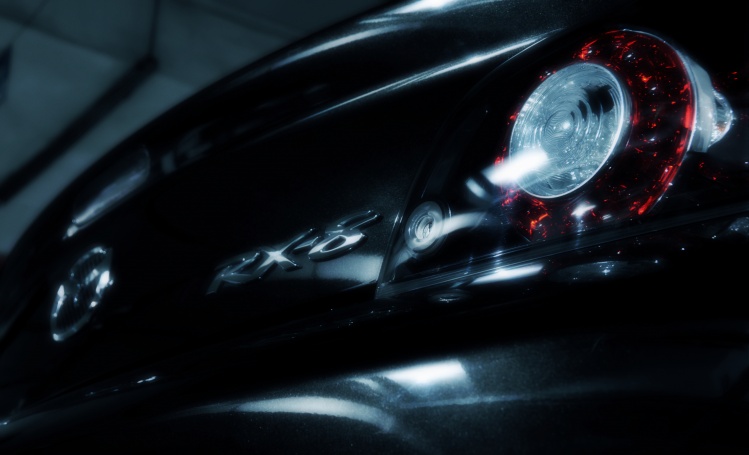

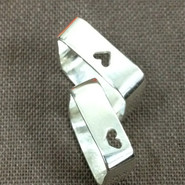
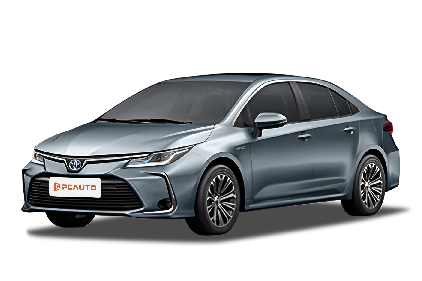

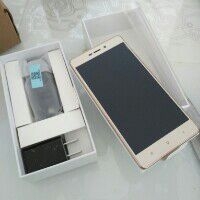



Pros
Cons